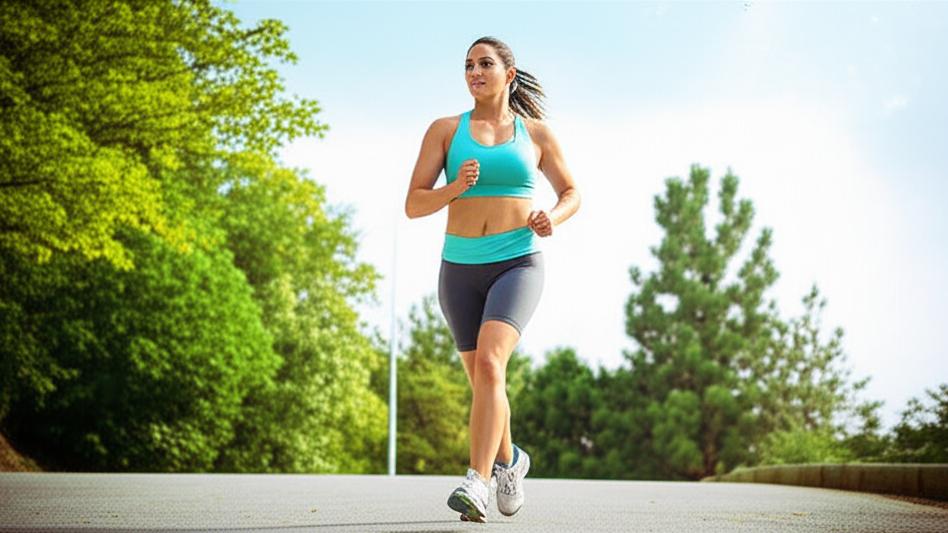Ever found yourself huffing and puffing after a short flight of stairs? Or maybe you’ve seen a friend who seems to breeze through a long walk, full of energy. That difference often comes down to something we call cardiovascular endurance. It’s a term we use a lot in the clinic, and it’s really about how well your heart and lungs team up to deliver oxygen to your body when you’re moving.
What’s Cardiovascular Endurance, Really?
Think of cardiovascular endurance, sometimes called aerobic fitness, as your body’s stamina. It’s a measure of how efficiently your heart and lungs can supply that vital oxygen to your muscles while you’re exercising at a moderate to fairly high pace. If you’ve got good cardiovascular endurance, you can keep going for longer – whether that’s a brisk walk, a dance class, or playing with your kids – before you feel wiped out.
Why does this matter so much? Well, strong cardiovascular endurance means your body is a champ at moving blood effectively. This gets more oxygen to all your cells, and that oxygen is like high-grade fuel for your tissues and muscles. It’s what keeps you going!
The Amazing Perks of Good Cardiovascular Endurance
When you work on your cardiovascular endurance, you’re doing so much good for your body. It’s not just about feeling less winded. We see some real, tangible benefits:
- It can help improve your cholesterol and blood pressure levels. Big wins for heart health!
- You’re lowering your risk for a whole host of issues, especially those affecting your heart and blood vessels.
- Honestly? It can even contribute to a longer, healthier life.
- Your heart and lungs literally get stronger.
- Everyday tasks, like lugging groceries or, yes, climbing those stairs, feel easier.
- Believe it or not, it can even give your brain function a little boost.
- Many of my patients report feeling better emotionally, too.
- Overall, it just makes for a better quality of life.
How Do We Figure Out Your Endurance Levels?
Now, you might be wondering how we actually measure cardiovascular endurance. In a more formal setting, we can use specific equipment to estimate the maximum amount of oxygen your body uses during exercise. These tests might involve:
- Pedaling on a stationary bike, where we gradually increase the intensity.
- Walking on a treadmill.
- Sometimes, running a certain distance in a set time.
- A shuttle run is another one – it’s pretty simple. You run back and forth between two points (usually about 20 meters apart) keeping a specific pace. The great thing about this is it doesn’t need fancy gear. A coach could even use it for a school team.
To give you a rough idea, an active young person might use about 35 to 50 milliliters of oxygen per kilogram of their body weight per minute. Serious endurance athletes? They can be way up there, sometimes 70 to 85! Even for folks who’ve had a health event like a stroke, where their numbers might be lower (say, 8 to 23), starting some modest aerobic exercise can improve this by a good 10% to 15%. It shows that improvement is almost always possible.
Boosting Your Cardiovascular Endurance: You Can Do It!
Here’s the best part: you absolutely can improve your cardiovascular endurance. The key is to do activities that make you breathe a bit harder and get your heart rate up.
You don’t have to become a marathon runner overnight!
- Start small: Even 10 to 15 minutes of focused activity a day can make a difference. We generally recommend adults aim for at least 150 minutes of moderate-intensity exercise each week.
- Gradually challenge yourself: Little by little, add a few more minutes to your sessions. Or, if you’re walking, try to go a bit further. Using a treadmill? Maybe increase the incline slightly. These small pushes are what build endurance.
Specific Training Methods Some People Try:
- Sprint Interval Training (SIT): This involves short bursts of all-out effort. For example, you might push as hard as you can for 10 to 30 seconds, then recover for 2 to 5 minutes, and repeat this 3 to 7 times. Studies have shown this can improve cardiovascular endurance by 4% to 13.5% in just a couple of months, doing it about three times a week.
- High-Intensity Interval Training (HIIT): This is similar, mixing short periods of really intense activity with periods of lower-intensity recovery. Some research suggests HIIT can lead to pretty impressive gains in cardiovascular endurance, sometimes as much as 38% to 79%!
What kinds of activities are we talking about? Anything that gets you moving and breathing:
- Swimming
- Riding a bike
- Dancing (put on some music!)
- Jogging or brisk walking
- Jumping rope
- Even taking the stairs instead of the elevator counts.
We’ll discuss all options and find what works best for you.
Take-Home Message: Your Heart Will Thank You
Let’s quickly recap what’s most important about cardiovascular endurance:
- It’s how well your heart and lungs supply oxygen during activity.
- Good endurance means more energy for daily life and exercise.
- Benefits include better heart health, lower disease risk, and improved mood.
- You can measure it, often through tests like treadmill walking or shuttle runs.
- Improving your cardiovascular endurance is achievable with regular aerobic exercise, like walking, swimming, or even interval training. Start where you are and build up.
You’re not alone in this journey to better health. Taking steps to improve your cardiovascular endurance is a fantastic gift to yourself. Keep at it, and you’ll feel the difference!


